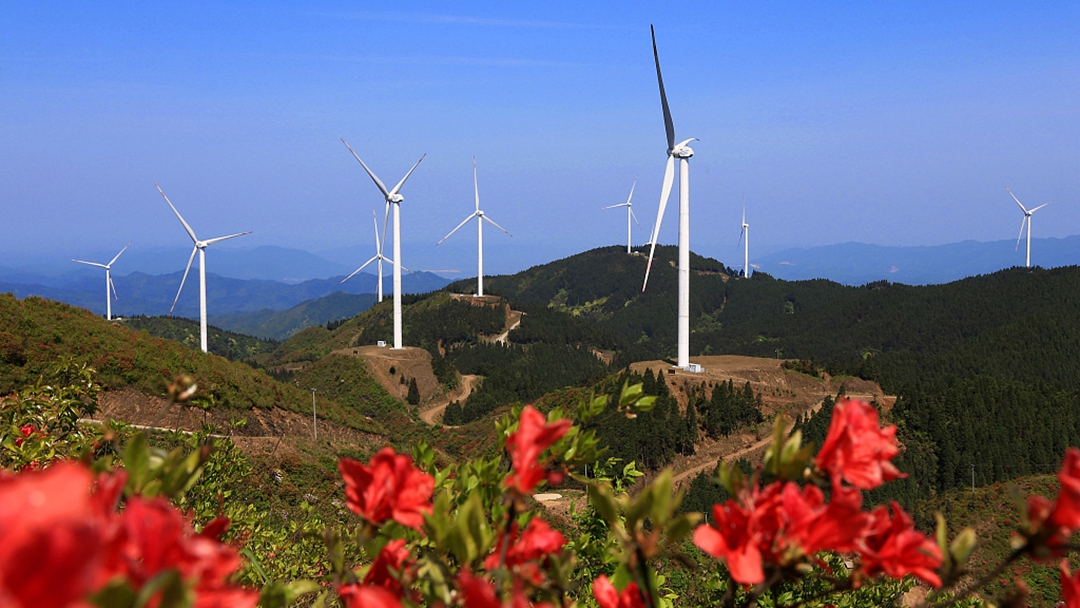Formulating an effective carbon pricing mechanism and prioritizing the most economical areas for emissions cuts are integral to realizing China’s two carbon emission goals, said a Chinese economist.

A wind farm in Jiangxi Province, east China, April 10, 2022. (Photo: CFP)
China aims to peak carbon emissions by 2030 and achieve carbon neutrality by 2060. The pledges were first made by President Xi Jinping at the 75th session of the United Nations General Assembly in 2020 and reappeared in a report delivered by Xi at the 20th National Congress of the Communist Party of China (CPC) on October 16.
Liu Qiao, dean of the Guanghua School of Management of Peking University, told the People’s Daily it was still too soon to bid farewell to coal imports.
Before China hits peak emissions, it should make adjustments to its coal consumption against the backdrop of the main task of economic development, Liu said. “This explains why [the government] doesn’t regulate the coal industry and thermal power generation with a one-size-fits-all approach.”
Liu said China’s capital market reacted swiftly to China’s plans to reduce carbon emissions and risks after the release of a timetable for carbon neutrality. “Investors have made the cost of carbon emissions a factor affecting their estimate of the market value of Chinese listed companies,” he said. “This indicates the goal of carbon neutrality and other concrete national strategies have been deeply seated in their minds.”
While Liu hailed China as one of the most accomplished countries in pushing for carbon reduction, Liu also noted China’s GDP per capita is one-fifth of the US’. China needs to strike a balance between economic development and green development, he said.
“The push for carbon neutrality needs to find an optimal path,” Liu said. China must achieve its energy structure transformation and industrial restructuring while minimizing the impact on socioeconomic development, employment, and the entire market in order to achieve real zero carbon emissions by 2060.
Liu offered two pieces of advice. “A key point to realizing carbon neutrality is finding and identifying industries that will have twice the effect in carbon reduction with half the work,” he said. “Allocate resources and favorable polices to those industries.”
“In addition, an effective carbon pricing mechanism has to be developed as soon as possible,” Liu said. “The current national carbon trading system has only listed 2,225 enterprises in the power sector since its launch, lacking activity, width and depth in the market. The national carbon trading system has a long way to go to truly reflect carbon price.”
Expanding the national carbon trading system is a key task, he summarized.


